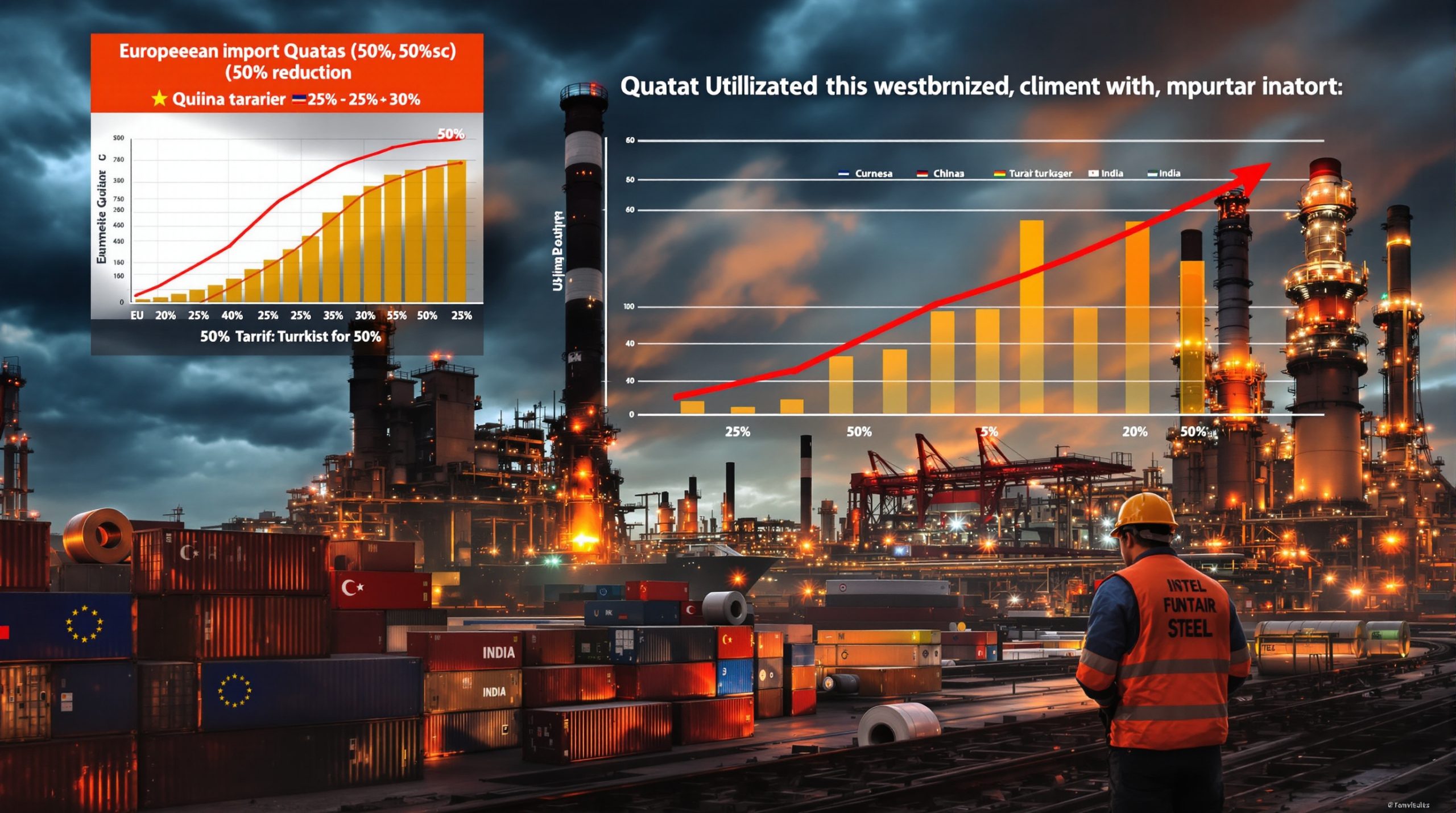China's Lithium Industry: Regulatory Approvals and Market Impact
China has recently approved reserve reports for two major lithium producers in Yichun, Jiangxi province, marking a significant development for the country's lithium sector. This regulatory milestone provides a pathway toward resumed operations for mines that faced operational challenges due to compliance issues. The approvals come at a critical time as China works to balance production needs with stricter oversight of its mining industry.
These regulatory developments affect not only domestic supply chains but also global lithium markets, which have experienced price fluctuations partly due to uncertainty surrounding Chinese production. The approvals represent China's evolving approach to managing its critical minerals transition while addressing environmental and administrative requirements.
Which Lithium Producers Received Regulatory Approvals?
Two prominent battery and energy storage companies have secured important regulatory clearances for their lithium operations in Yichun:
-
Contemporary Amperex Technology (CATL) – Received reserve approval for its Jianxiawo mine, which had been suspended since August 2025 due to an expired mining permit. As a leading global producer of electric vehicle batteries, CATL's operational status significantly impacts supply chains.
-
Gotion High Tech – Secured approval for both mining design and ecological restoration plans at its Yichun site. According to Mining Technology, the company stated that its lithium unit "is allowed to mine based on production needs."
These approvals were part of a broader regulatory process affecting eight lithium producers in the Yichun region. All eight companies were required to submit reserve reports by the end of September 2025 following an administrative audit that revealed compliance shortcomings.
While the approvals move these sites closer to securing full mining permits and resuming operations, there is no certainty regarding immediate production resumption. The clearance represents progress but may require additional steps before full operational status is achieved.
Why is the Yichun Lithium Hub Significant to Global Markets?
The Yichun region has emerged as a focal point for China's lithium industry with substantial implications for global supply chains:
Strategic Importance
Yichun has developed into one of China's most significant lithium production hubs, with multiple operations concentrated in a single region. This concentration of production capacity makes regulatory developments in the area particularly impactful for global markets.
Supply Chain Integration
The region's lithium operations are tightly integrated with China's battery manufacturing ecosystem. Companies like CATL operate as part of vertically integrated supply chains that connect raw material extraction directly to battery production for electric vehicles.
Market Sensitivity
As noted in industry reporting, "The lithium hub has drawn attention in recent months as fears over supply tightened price fluctuations for the battery metal." This highlights how even temporary disruptions in Yichun can trigger ripple effects throughout global lithium brine insights and markets.
Production Scale
While specific production figures aren't available in the source material, Yichun represents a significant percentage of China's lithium mining capacity, which in turn influences global supply availability and price dynamics.
The combination of these factors means that regulatory decisions affecting Yichun operations can have outsized impacts on battery material supply chains, electric vehicle manufacturing schedules, and energy storage system availability.
What Caused the Initial Production Disruptions?
The regulatory challenges that led to production disruptions stemmed from several interrelated factors:
Administrative Compliance Issues
An audit by Chinese authorities revealed what Mining Technology described as "administrative shortcomings" across multiple mining operations in the Yichun region. These compliance issues triggered the requirement for all eight producers to submit comprehensive reserve reports.
Permit Expiration
CATL's Jianxiawo mine faced a specific challenge that led to its suspension in August 2025. According to available information, the company announced it would halt operations "due to an inability to renew an expired mining permit." This highlights the importance of maintaining valid operational licenses in China's increasingly regulated mining sector.
Regulatory Scrutiny
The situation reflects China's intensified focus on proper administration of mining resources. The requirement for validated reserve reports indicates authorities' desire to verify resource estimates and ensure proper documentation before allowing continued extraction.
Industry-Wide Review
The fact that eight companies were simultaneously required to submit reserve reports by the end of September 2025 suggests a coordinated regulatory review rather than isolated actions against individual operators.
These disruptions illustrate how administrative and regulatory factors can significantly impact production even in strategically important mining sectors. The situation also demonstrates China's willingness to enforce compliance requirements even when it might temporarily constrain supply of critical battery materials.
How Have These Approvals Affected Lithium Markets?
The regulatory approvals have generated several market impacts, though specific price data isn't provided in the source material:
Reduced Supply Concerns
According to Mining Technology, the approvals have provided "some relief to market concerns over potential output disruptions." This suggests that market participants had been pricing in risk premiums associated with potential longer-term shutdowns.
Stabilization Potential
By reducing uncertainty around future production from these significant operations, the approvals may help moderate price volatility in lithium markets that had been exacerbated by speculation about extended disruptions.
Cautious Optimism
While the approvals represent progress, market participants likely remain cautious about production resumption timelines. As noted in the source material, the clearances move the sites "closer to securing a mining permit and resuming operations, although there is no certainty."
Operational Timeline Questions
Despite the positive regulatory developments, questions remain about how quickly the approved companies can complete any remaining requirements and return to full operational status.
The market response reflects the balance between positive developments (approvals granted) and lingering uncertainties (exact resumption dates). This nuanced reaction underscores how regulatory processes in China's mining sector can create extended periods of market adjustment rather than immediate resolution.
What Does This Reveal About China's Lithium Industry Strategy?
The regulatory approach demonstrated in Yichun reveals several key aspects of China's lithium sector management strategy:
Balancing Production and Compliance
The approval process shows China working to maintain production capabilities while simultaneously enforcing stricter compliance standards. This balancing act aims to ensure sustainable development of strategic resources.
Formalized Oversight
By requiring formal reserve reports and mining design approvals, China is institutionalizing more rigorous oversight of its lithium sector. This represents a maturation of the regulatory environment as lithium becomes increasingly critical to industrial policy.
Environmental Integration
Gotion High Tech's approval specifically included ecological restoration plans, highlighting how environmental considerations are becoming integrated into core mining approvals rather than treated as separate issues.
Strategic Resource Management
The careful regulatory approach reflects China's recognition of lithium as a strategic resource worthy of comprehensive management. The approvals process demonstrates China's interest in developing these resources in a controlled manner.
The overall picture that emerges is of a country implementing more sophisticated resource governance while attempting to maintain its competitive advantage in critical mineral supply chains. This approach recognizes both the economic importance of lithium production and the need for sustainable development practices.
How Does This Fit Into Global Lithium Supply Dynamics?
The Chinese regulatory developments have broader implications for international lithium markets and supply chains:
Global Interdependence
The market response to regulatory developments in a single Chinese mining region demonstrates the deeply interconnected nature of global lithium supply chains. Production changes in Yichun rapidly impact worldwide lithium availability and pricing expectations.
Regulatory Influence
China's approach to lithium regulation can establish precedents that influence how other producing nations manage their resources. As the world's largest lithium processor and a major producer, China's regulatory frameworks carry significant weight.
Supply Chain Transparency
The formal approval process represents increasing transparency in China's lithium sector, providing market participants with clearer information about production expectations and regulatory requirements.
Investment Signals
The regulatory clarity provided by the approvals process gives important guidance to international investors considering lithium projects both within China and globally. Understanding China's approach helps inform investment decisions throughout the supply chain.
These dynamics highlight how China's domestic regulatory decisions have cascading effects throughout global energy transition supply chains, influencing everything from mining investment to electric vehicle production planning.
What Are the Next Steps for the Approved Companies?
Despite receiving reserve approvals, the lithium producers face several additional steps before returning to full operational status:
Mining Permit Acquisition
As noted in the source material, the reserve approvals move the sites "closer to securing a mining permit," indicating that additional permitting steps may still be required before full operations can resume.
Implementation of Environmental Plans
For Gotion High Tech specifically, implementing the approved ecological restoration plans will likely be a requirement for maintaining operational approval.
Operational Readiness
After addressing administrative requirements, the companies will need to ensure operational readiness for production resumption, potentially including equipment inspections, staffing adjustments, and supply chain reactivation.
Compliance Monitoring
Ongoing adherence to regulatory requirements will be essential for maintaining operational status, likely including regular reporting and potential site inspections.
The companies will need to navigate these requirements while balancing production goals with regulatory expectations. The timeline for completing these steps remains unclear based on available information.
What Other Mining Industry Developments Are Occurring in China?
Beyond the lithium sector, other significant developments are shaping China's broader mining and resources industry:
Iron Ore Purchasing Directives
According to Mining Technology, China Mineral Resources Group has "reportedly instructed domestic buyers to halt purchases of any dollar-denominated seaborne cargoes from BHP." This directive means "no new agreements can be finalised, even for shipments that have already departed from Australia, where BHP operates its mines."
Strategic Resource Organizations
The source notes that China Mineral Resources Group was "established by Beijing to enhance China's influence in the global iron ore market." This demonstrates China's creation of centralized purchasing entities to strengthen its position in key mineral supply chains.
Coordinated Market Approach
The iron ore purchasing directive suggests coordination between regulatory bodies and state-affiliated entities to achieve strategic objectives in mineral markets.
Cross-Commodity Strategy
When viewed alongside the lithium regulatory developments, these iron ore directives indicate China is implementing resource strategies across multiple critical commodities simultaneously.
These parallel developments illustrate China's comprehensive approach to managing its resource dependencies and strengthening its position in global mineral markets. The simultaneous actions across different commodity sectors suggest a coordinated strategy rather than isolated regulatory decisions.
What Should Industry Stakeholders Monitor Going Forward?
Industry participants should watch several key indicators in the coming months to understand how China's lithium industry developments will impact global markets:
Production Resumption Timelines
The most immediate factor to monitor is when and how quickly the approved operations return to production. Actual output levels compared to pre-suspension capacities will provide insight into any lingering regulatory constraints.
Regulatory Precedents
How these approvals are implemented could establish precedents for other mining operations in China, potentially signaling wider regulatory trends across the country's critical minerals sector.
Environmental Requirements
The specific environmental restoration requirements implemented at these sites may indicate evolving standards that could eventually apply across China's mining industry.
Supply Chain Responses
Downstream battery manufacturers and electric vehicle producers may adjust procurement strategies based on their assessment of ongoing regulatory risks in China's lithium sector.
Market Price Reactions
Lithium price movements in the weeks following these approvals will reveal market participants' confidence in stable production resumption.
Additional Regulatory Developments
Further announcements regarding the remaining Yichun producers who submitted reserve reports will provide a more complete picture of China's regulatory approach.
The situation remains fluid, with potential for additional regulatory actions that could impact both domestic and global lithium supply chains. Market participants will need to maintain close monitoring of both official announcements and operational developments on the ground.
China's Balancing Act: Lithium Regulation and Market Stability
China's approach to lithium regulation demonstrates a sophisticated balancing act between several competing priorities. The country is working to maintain its dominant position in global battery supply chains while simultaneously implementing more rigorous oversight of its mining sector. This dual focus reflects China's long-term strategy of securing critical mineral resources while improving environmental and administrative governance.
For global markets, these developments highlight the continued importance of understanding China's regulatory environment when assessing lithium supply risks. The Yichun situation demonstrates how administrative and regulatory factors can create significant production uncertainty even in strategically important sectors. As electric vehicle adoption accelerates globally, these regulatory dynamics will remain a critical factor in lithium market stability.
The approvals granted to CATL and Gotion High Tech represent important progress toward operational normalization, but also illustrate how China's evolving governance of critical minerals creates new complexities for market participants. Industry stakeholders will need to closely monitor both regulatory announcements and on-the-ground implementation to accurately assess China's lithium production trajectory and its impact on lithium industry innovations and battery recycling breakthrough technologies, along with effects on global US lithium production.
Looking for the Next Major Mineral Discovery?
Discovery Alert's proprietary Discovery IQ model delivers instant notifications on significant ASX mineral discoveries like those in the lithium sector, turning complex data into actionable insights for investors. Understand why major mineral discoveries can lead to substantial market returns by visiting Discovery Alert's dedicated discoveries page.




